Are you struggling to structure meaningful activities for preschoolers? Do your lesson plans feel repetitive or disconnected? Are you unsure how to build daily and weekly plans that truly benefit young learners and meet early education goals?
Preschool lesson plans are critical to ensuring structured, age-appropriate, and engaging learning experiences for young children. A well-crafted plan not only improves classroom management and learning outcomes but also boosts teacher confidence and ensures developmental milestones are met.
If you’re an educator, school founder, or curriculum planner looking to build powerful, consistent preschool lesson plans, you’re in the right place.
Why Are Preschool Lesson Plans More Important Than Ever?
The world of early childhood education has changed drastically over the last decade. Children today are growing up in environments filled with screens, fast-paced media, and reduced unstructured playtime. Meanwhile, expectations from parents, school administrators, and government institutions have become more defined—demanding a structured, outcome-driven, and safe preschool learning environment.
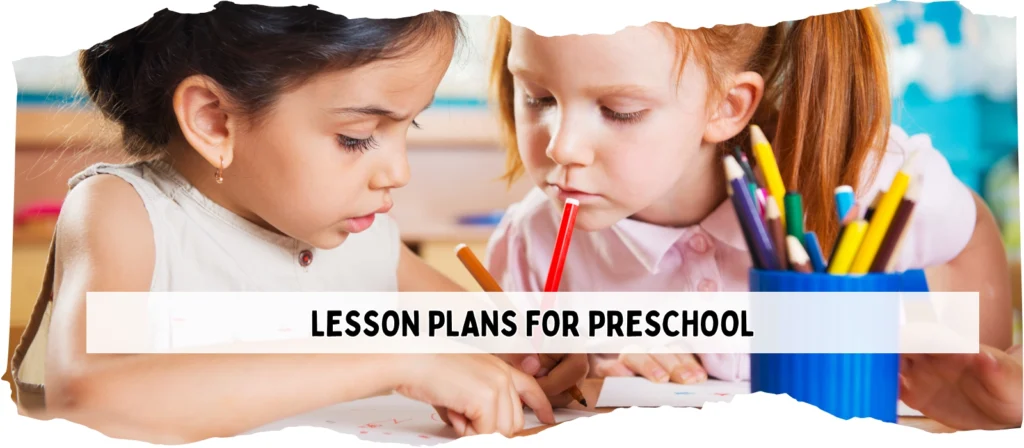
Preschool lesson plans serve as the backbone of a well-functioning classroom. They give educators a roadmap to follow, helping them meet both educational standards and the emotional and developmental needs of children. Without a solid plan, preschool education can become disorganized, inconsistent, and unproductive.
Furthermore, lesson planning is more than just filling time—it’s about guiding children through activities that stimulate their curiosity, enhance cognitive skills, promote physical development, and build social-emotional intelligence. Research shows that quality early education has lasting benefits, including improved academic performance, better social behavior, and increased graduation rates.
Educators also benefit immensely. Well-organized preschool lesson plans reduce stress, ensure better time management, and provide a structure that accommodates flexibility for individual children’s needs. Teachers can better evaluate progress, adjust strategies, and communicate with parents or administrators more effectively.
In our work with hundreds of international kindergartens at XIHA Furniture, we’ve seen firsthand how structured lesson planning improves classroom dynamics and helps educators become more confident and impactful.
With increasing competition among early childhood institutions and rising expectations from parents, high-quality preschool lesson plans have gone from optional to essential.
Key Components Every Effective Preschool Lesson Plan Must Include
Creating a strong preschool lesson plan means combining structure with flexibility, and intention with creativity. An effective plan must account for the whole child—intellectually, emotionally, physically, and socially. Whether you’re a new teacher or an experienced early educator, here are the essential elements every preschool lesson plan should include:
1. Clear Learning Objectives
Each activity must have a purpose. Objectives should align with early learning standards and developmental milestones. For example, “Students will be able to identify and name four different shapes” is a measurable, age-appropriate goal.
2. Age-Appropriate Activities
Young children have limited attention spans and varied developmental paces. Activities should be short, interactive, and adapted for different learners. Use visual, auditory, and kinesthetic methods to engage all senses.
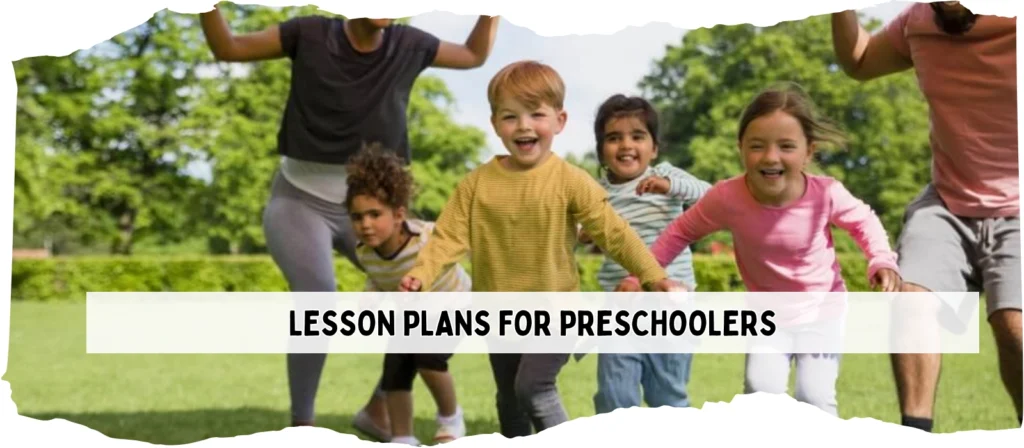
3. Materials and Resources
List every item needed—from storybooks to blocks, paint, and music instruments. Having materials ready enhances class flow and minimizes downtime.
4. Schedule and Time Allocation
Structure your day in logical segments: circle time, story time, learning centers, snack, outdoor play, and quiet time. Allocate minutes for each and ensure transitions are smooth.
5. Assessment and Observation Notes
Every lesson should include a strategy to observe children’s reactions and note developmental progress. This helps tailor future lessons and supports individual growth.
6. Inclusion and Differentiation
Plans should consider students with different needs and learning styles. Include modifications for children with special needs or advanced learners.
7. Parent Communication Notes
Informing parents about weekly themes or key activities builds transparency and engagement. Brief notes or a newsletter can make a big difference.
By embedding these components into every preschool lesson plan, educators can create more meaningful, productive, and joyful learning environments.
Structuring Weekly and Daily Preschool Lesson Plans for Maximum Impact
A common challenge in early childhood education is balancing the spontaneity of play with the structure of scheduled learning. Effective preschool lesson plans strike this balance by using a reliable daily and weekly framework that remains flexible enough for adaptation.
Building a Weekly Framework
Start with a broad weekly theme that aligns with your educational goals and seasonal or cultural events (e.g., “Spring Gardens,” “Community Helpers,” or “Five Senses”). Each week should have a clear developmental focus—language, motor skills, social behavior—and include activities tailored to that focus.
Here’s a sample weekly plan layout:
- Monday: Introduction to the theme + story time
- Tuesday: Hands-on creative activity (art, music, or sensory bin)
- Wednesday: Outdoor learning + movement games
- Thursday: Group discussion or show-and-tell
- Friday: Recap, reflection, and fun review activities
Use this format to build routines while keeping daily lessons fresh and engaging. It also helps teachers prepare materials in advance and reduces last-minute stress.
Daily Planning Essentials
Daily preschool lesson plans should break down the full day into manageable parts. Include the following segments:
- Arrival & Free Play (15–30 mins)
- Circle Time (15 mins): Songs, calendar, weather, theme discussion
- Activity Block 1 (30 mins): Core theme activity or learning center
- Snack Time (15 mins)
- Activity Block 2 (30 mins): Physical development or group learning
- Story Time/Quiet Time (20 mins)
- Outdoor Play (30–45 mins)
- Wrap-Up & Goodbyes (10 mins)
Each block should link back to the weekly theme and learning objectives. Use transitions with songs or countdowns to keep children engaged.
Planning Tips
- Reuse popular activity structures but change the content (e.g., scavenger hunts, matching games)
- Observe how children respond to timing—some may need shorter activities, others need repetition
- Keep notes daily so you can modify for the next day or week
By using both weekly and daily planning tools together, you create a consistent yet adaptable structure that promotes meaningful learning and reduces classroom chaos.
Best Template Formats for Professional Preschool Lesson Planning
Using the right template can make or break the success of a preschool lesson plan. Templates help ensure consistency, save time, and keep the planning process aligned with learning objectives. Whether you’re teaching in a structured Montessori setting, a play-based classroom, or a hybrid model, templates provide a professional foundation for organizing your lessons.
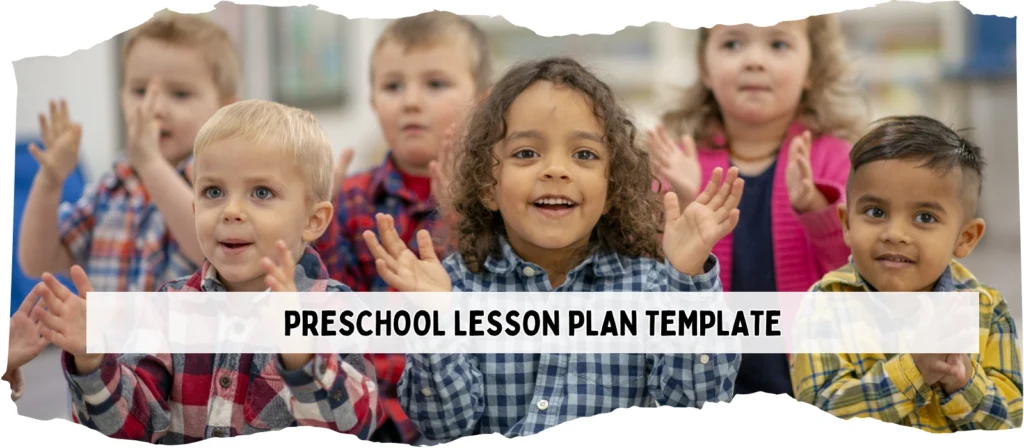
1. Daily Plan Template
This template is structured hour-by-hour, outlining blocks of time and assigning each to a specific type of activity. It often includes:
- Learning objectives
- Materials needed
- Step-by-step activities
- Observation notes
Perfect for teachers who prefer a strict daily routine.
2. Weekly Plan Grid
A weekly plan format shows each weekday along the top, with categories like literacy, numeracy, arts, motor skills, and science along the side. This helps track cross-subject integration.
Ideal for directors and curriculum leads who need to ensure balanced weekly content.
3. Theme-Based Planning Sheets
These sheets are organized around a central weekly theme such as “Dinosaurs,” “Community Helpers,” or “Weather.” Each activity aligns with the theme across multiple learning domains.
Highly engaging for students, and easy for teachers to align content.
4. Editable Digital Templates (PDF/Word/Google Docs)
Free editable preschool lesson plan template PDFs and Docs allow flexibility and collaboration among teams. Teachers can share updates, revise plans, and track progress digitally.
Download free editable preschool lesson plan templates
5. Montessori-Inspired Templates
These include self-directed learning activities categorized by Practical Life, Sensorial, Math, Language, and Cultural areas. The structure reflects Montessori’s child-led methodology.
Best for preschools following Montessori principles.
6. Learning Center Rotation Chart
For classrooms with different learning stations, this chart shows which group is in which center at what time, and what activity they’ll do there. It simplifies transitions and supports small-group instruction.
Using the right template type, or a hybrid of several, allows you to tailor your planning to your teaching style and classroom needs. It also ensures that lessons are well-rounded and professionally structured, which benefits children, teachers, and school administrators alike.
Building Theme-Based Preschool Lesson Plans That Engage and Educate
One of the most effective ways to enrich preschool lesson plans is by incorporating themes. Thematic teaching helps children connect new knowledge to familiar concepts, enhances vocabulary development, and supports interdisciplinary learning.
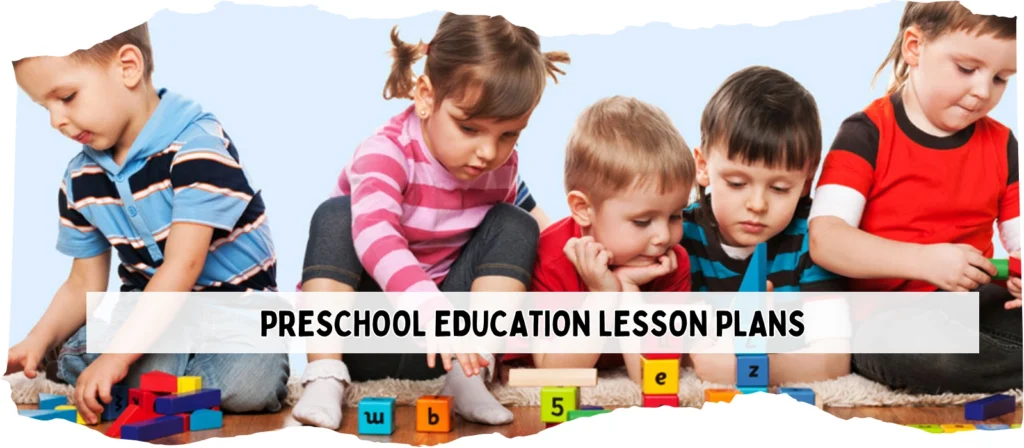
Preschool teachers often rely on themes such as seasons (spring, autumn), holidays (Thanksgiving, Halloween), topics (community helpers, insects, dinosaurs), and concepts (colors, emotions, five senses) to guide their weekly plans.
A strong theme serves as the anchor for all classroom activities, making it easier for children to absorb and apply information. For example, a “Transportation” theme might include:
- Literacy: Reading books like “Freight Train” or “The Wheels on the Bus”
- Math: Counting wheels, sorting types of vehicles
- Art: Building cardboard buses or painting traffic lights
- Music: Singing transportation-themed songs
- Physical play: Role-playing drivers or obstacle course “roads”
Thematic plans also promote cultural understanding. Themes like Chinese New Year, Diwali, or Black History Month can broaden children’s perspectives and spark inclusive conversations.
To build your own themed preschool lesson plan:
- Choose a theme relevant to children’s lives or the curriculum calendar
- Identify objectives across domains—literacy, numeracy, science, physical, social-emotional
- Plan daily activities that reinforce the theme across learning areas
- Include related songs, stories, and visual aids to reinforce memory
See thematic unit examples for preschool
Whether you’re using a fall-themed lesson plan, a bug-focused science unit, or a week on Dr. Seuss books, thematic learning brings cohesion, engagement, and excitement into every part of the day.
Six Creative and Innovative Approaches to Preschool Lesson Plans
While structure is essential, the best preschool lesson plans also leave room for creativity and adaptability. Children are naturally curious, and responding to their energy with innovative teaching methods can take your classroom to the next level. Here are six creative approaches that can help transform traditional preschool lesson plans into inspiring, child-centered experiences:
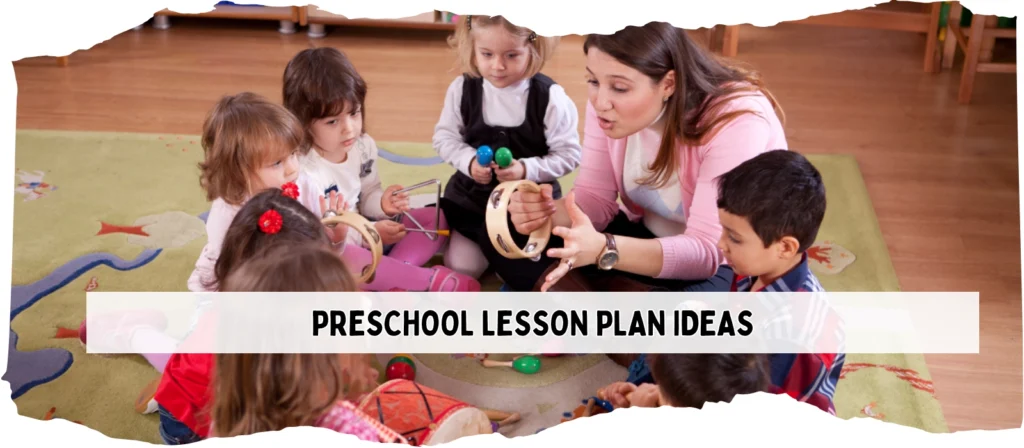
1. Inquiry-Based Learning
This method encourages children to ask questions and explore topics through their own curiosity. For example, if children are fascinated by bugs, a teacher might pivot that week’s preschool lesson plan to include insect observation, reading bug-related stories, and drawing favorite bugs. It promotes ownership of learning and keeps students engaged.
2. Learning Through Play
Preschoolers learn best through play. Building preschool lesson plans around play-based objectives (e.g., sorting colors through a ball pit, learning numbers with counting games) allows children to develop critical skills without feeling pressured. Play supports emotional regulation, motor development, and cognitive growth.
3. Outdoor Learning Integration
Don’t confine learning to the classroom. Preschool lesson plans that include nature walks, garden planting, or weather exploration make learning tactile and memorable. Nature-based learning also supports science, motor development, and emotional well-being.
4. Art as a Central Element
Creative expression is vital at this stage. Build lesson plans that use art to explore core subjects. Painting shapes, constructing with recycled materials, or storytelling through puppets helps integrate art with literacy, math, and social studies. It also builds fine motor skills and boosts confidence.
5. Use of Core Vocabulary and AAC
For inclusive classrooms, incorporating core vocabulary boards and augmentative communication (AAC) strategies into your preschool lesson plans ensures accessibility. Use repeated vocabulary exposure in every activity, such as “go,” “stop,” “open,” or “help,” to support language development for all learners.
6. Thematic Drama and Role Play
Turn your classroom into a space station, a grocery store, or a vet clinic. Thematic dramatic play builds social-emotional skills, vocabulary, and creativity. Preschool lesson plans that involve role play are powerful for helping children understand real-world contexts through imagination.
By integrating these innovative methods, educators can turn standard preschool lesson plans into dynamic, immersive experiences that inspire joy and deeper learning. Whether indoors or outdoors, structured or spontaneous, flexibility and creativity are at the heart of effective preschool education.
Subject-Based Preschool Lesson Plans: Enhancing Skills Across Every Domain
Preschool lesson plans are most impactful when they are integrated with subject-based objectives. Instead of treating math, science, art, or music as isolated segments, weaving them into a holistic daily or weekly lesson plan supports developmental goals and creates a more enriching experience.
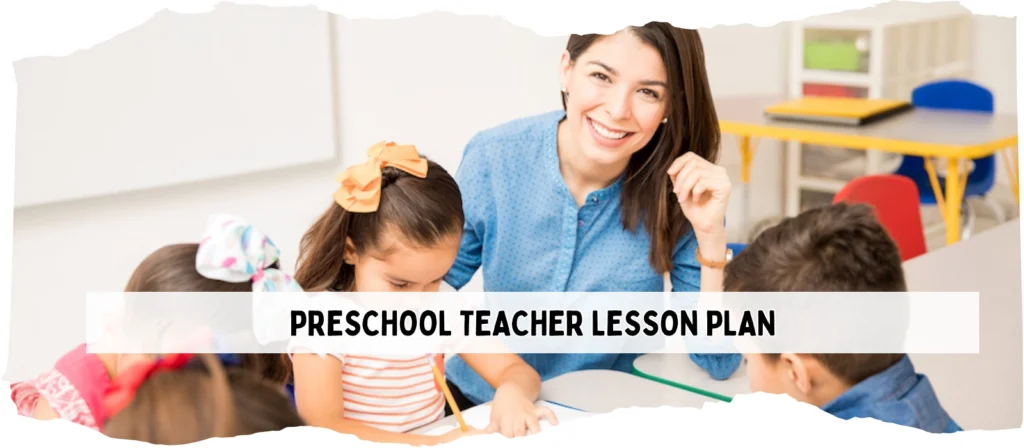
1. Science Lesson Plans for Preschoolers
Preschool science doesn’t require high-tech labs—it’s about encouraging curiosity and observation. Popular topics include weather, plants, animals, magnets, and the five senses. A preschool science lesson plan might include:
- Observing seed growth over a week
- Simple experiments like mixing baking soda and vinegar
- Sorting natural vs. artificial materials
Science fosters critical thinking and vocabulary growth. Explore preschool science activities
2. Math-Focused Preschool Lesson Plans
Math in preschool is concrete and hands-on. Lesson plans should focus on counting, shapes, size comparison, patterns, and simple measurement. Use games and manipulatives such as:
- Counting blocks or beads
- Matching shape cutouts
- Building towers with size order
These activities reinforce spatial awareness and number sense, foundational to future math learning.
3. Literacy and Language Arts Plans
Reading and communication are pillars of early childhood education. Preschool literacy lesson plans should include:
- Daily read-aloud sessions
- Letter recognition and phonics games
- Story sequencing and vocabulary building
Focus on developing pre-writing skills through tracing and storytelling. This supports language development and prepares children for primary education.
4. Music Lesson Plans
Music supports memory, rhythm, listening skills, and emotional expression. Weekly preschool lesson plans might include:
- Singing familiar songs and introducing new ones
- Exploring instruments (shakers, drums, xylophones)
- Rhythm games and freeze dance
Music helps reinforce classroom routines and can be connected with themes like seasons or holidays. Preschool music resources
5. Art and Sensory Integration
Art isn’t just fun—it supports motor skills, creativity, and emotional expression. Lesson plans should offer:
- Painting, drawing, and collaging
- Sensory bins and texture exploration
- Crafting based on the weekly theme
Encourage choice and self-expression, giving children control over colors, materials, and outcomes.
6. Social-Emotional Learning (SEL)
Preschool lesson plans must include activities that foster empathy, self-regulation, and cooperation. Include:
- Group activities that require turn-taking
- Emotion cards and story-based discussion
- Conflict resolution role play
This builds the foundation for interpersonal success in school and beyond.
By embedding subject learning into every aspect of the day, your preschool lesson plans will be more cohesive, engaging, and developmentally supportive. This well-rounded approach helps children develop both core academic and life skills—setting the stage for long-term success.
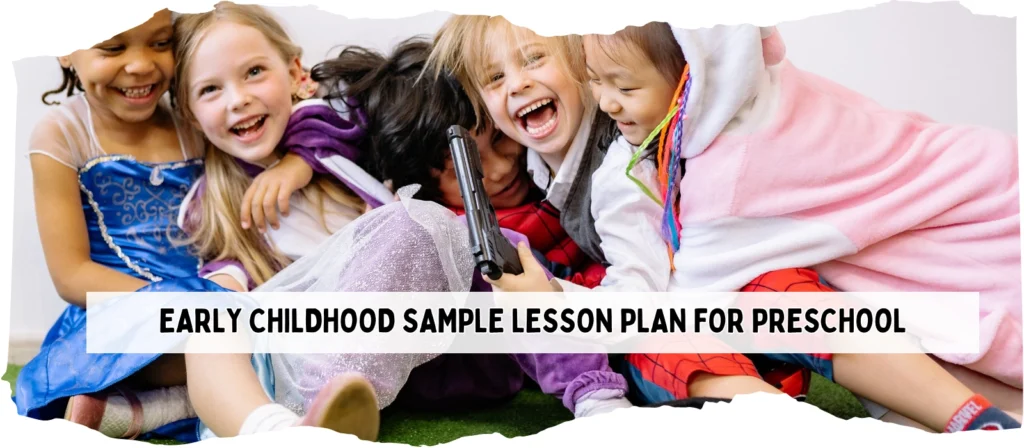
More Related Content
Preschool lesson plans are never one-size-fits-all. Depending on the season, student interest, or curriculum goals, educators can explore hundreds of adaptable themes and strategies. Below are some popular lesson plan directions worth exploring further:
Fall and Autumn Lesson Plans for Preschool
Seasonal changes offer excellent opportunities for integrated learning. Use falling leaves, apple picking, or Halloween to drive themes in art, science, and storytelling.
Transportation-Themed Preschool Lessons
Kids love vehicles—cars, trains, planes! This theme supports language, math, gross motor play, and problem-solving activities. A simple road-building sensory bin can combine science, construction, and social play in one.
“All About Me” Week
This common start-of-year plan helps kids explore their identity and fosters classroom community. Activities include self-portraits, name songs, family tree discussions, and group games.
Bugs and Insects Preschool Lesson Plans
Insects captivate young learners. Use this theme to explore classification, habitats, life cycles, and even creative expression. From butterfly crafts to counting ants, preschool lesson plans on bugs are rich in learning potential.
Safety and Community Helper Themes
Children thrive when they feel safe. Preschool lesson plans focusing on fire safety, stranger danger, or learning about helpers like police officers and doctors are both practical and engaging.
Weather, Seasons, and Senses Themes
These topics help children connect with their environment and learn to describe their world. Plan daily observations, weather charts, sensory walks, and themed crafts around rain, wind, snow, or sunshine.
Holiday-Based Plans
Thanksgiving, Christmas, Chinese New Year, and other holidays offer a mix of cultural education and festive creativity. Be sure to make them inclusive, age-appropriate, and full of music, stories, and crafts.
For a deeper dive into free preschool lesson plan templates and printable versions, you can visit resources like PreKinders or Education.com. These platforms offer editable tools to customize your own preschool lesson plans while aligning with early learning standards.
With the right blend of inspiration, structure, and creativity, your preschool lesson plans can transform not only your classroom—but your students’ lives.
Conclusion
Preschool lesson plans are the foundation of effective early childhood education. When designed with intention, creativity, and structure, they do more than organize your day—they shape how children grow, think, and connect with the world. Whether you’re building science-based activities, integrating music and art, or exploring seasonal themes, the right preschool lesson plan empowers both educators and learners.
At XIHA Furniture, we believe in supporting the full learning environment—from the furniture that fosters safe, functional spaces to the pedagogical strategies that bring them to life. By using structured, engaging preschool lesson plans, educators can transform classrooms into thriving spaces of discovery, joy, and development.
Ready to take your lesson planning to the next level? Start with our guide and watch your preschoolers flourish.



